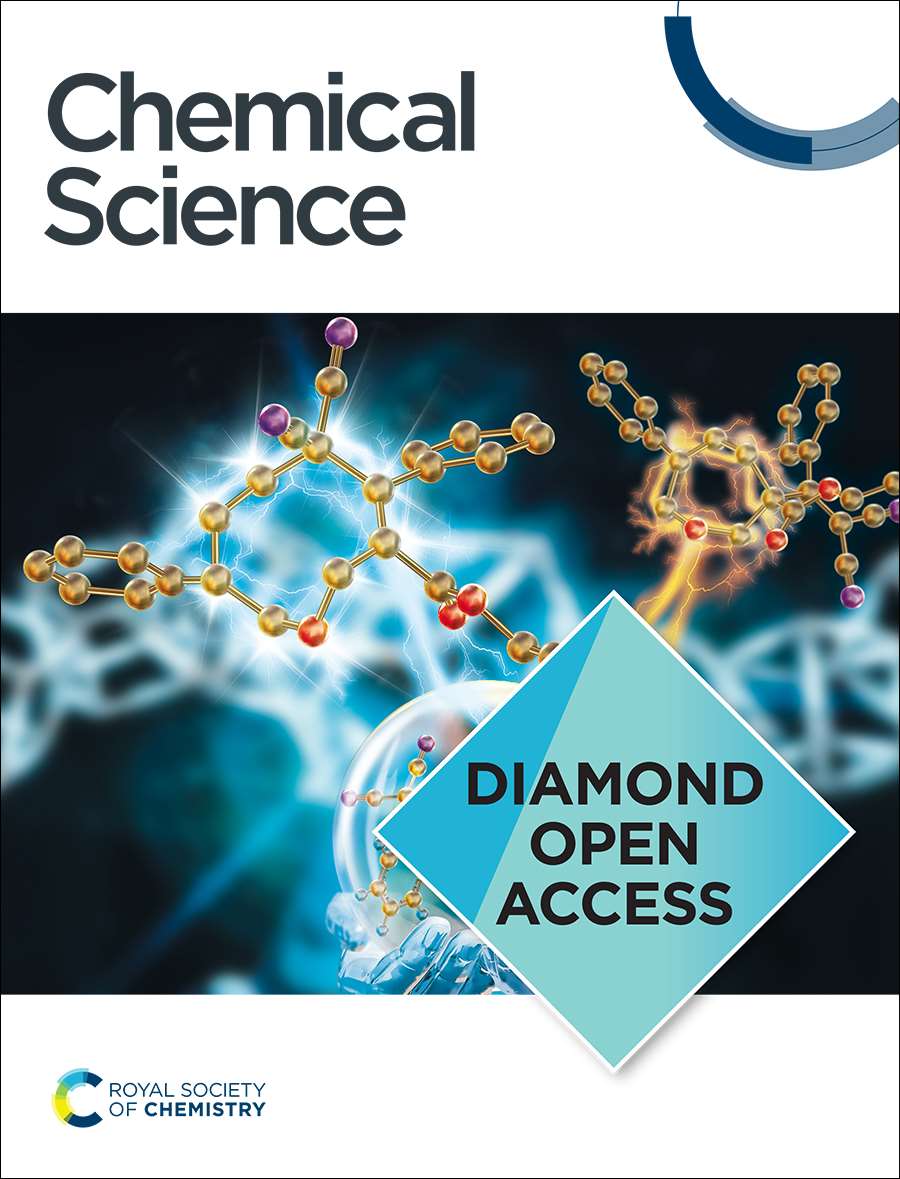通过合成后交联的共价有机框架的2d到3d转换
IF 7.6
1区 化学
Q1 CHEMISTRY, MULTIDISCIPLINARY
引用次数: 0
摘要
二维(2D)共价有机框架(COFs)比三维(3D)框架更容易合成和功能化,但二维框架由于维持层状结构的弱非共价相互作用而缺乏稳定性。在此,我们提供了一种合成后策略,在保持材料结晶度和孔隙度的同时,将独立的2D COFs片共价交联。与母体2D框架相比,交联框架显示出大大增强的机械稳定性,当受到广泛的超声或磨削时,保留了90%以上的原始brunauer - emmet - teller (BET)表面积。此外,交联可以减少与硼氢化钠的亚胺键,同时保持结晶度和孔隙度,这在二维COFs中尚未得到证实。最后,交联框架上的亚胺键首先被还原,然后与酰基氯反应,建立了框架功能化的一般方法。这种合成后交联方法稳定了二维框架,并打开了这些材料中胺键的通道,从而提高了水解稳定性和作为选择性吸附剂的潜在功能化。本文章由计算机程序翻译,如有差异,请以英文原文为准。

2D-to-3D transformations of a covalent organic framework via post-synthetic crosslinking
Two-dimensional (2D) covalent organic frameworks (COFs) are easier to synthesize and functionalize than their three-dimensional (3D) counterparts, but the 2D frameworks lack stability due to weak non-covalent interactions that maintain the layered structure. Herein, we provide a post-synthetic strategy to covalently crosslink the independent sheets of 2D COFs while preserving the crystallinity and porosity of the materials. The crosslinked frameworks show greatly enhanced mechanical stability compared to the parent 2D frameworks, retaining more than 90% of the original Brunauer–Emmett–Teller (BET) surface area when subjected to extensive sonication or grinding. Further, crosslinking enables the reduction of the imine linkages with sodium borohydride while preserving crystallinity and porosity, which has yet to be shown for 2D COFs. Finally, the imine linkages on a crosslinked framework were first reduced and then reacted with an acyl chloride, establishing a general approach to framework functionalization. This post-synthetic crosslinking approach stabilizes 2D frameworks and opens access to amine linkages in these materials, thus increasing hydrolytic stability and potential functionalization as selective adsorbents.
求助全文
通过发布文献求助,成功后即可免费获取论文全文。
去求助
来源期刊

Chemical Science
CHEMISTRY, MULTIDISCIPLINARY-
CiteScore
14.40
自引率
4.80%
发文量
1352
审稿时长
2.1 months
期刊介绍:
Chemical Science is a journal that encompasses various disciplines within the chemical sciences. Its scope includes publishing ground-breaking research with significant implications for its respective field, as well as appealing to a wider audience in related areas. To be considered for publication, articles must showcase innovative and original advances in their field of study and be presented in a manner that is understandable to scientists from diverse backgrounds. However, the journal generally does not publish highly specialized research.
 求助内容:
求助内容: 应助结果提醒方式:
应助结果提醒方式:


